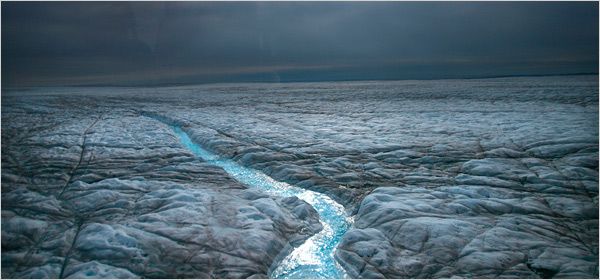I was engaged in a conversation the other day with someone about my new association with the Lifeboat Foundation and the opportunity that was presented to me to sit on one of the scientific advisory boards. Let me first point out that the person I was talking with is extremely intelligent, but has a lay person’s knowledge of scientific topics, and is generally unfamiliar with Singularity related concepts in particular.
I immediately realized the opportunity in associating with the organization, but still did some reasonable due diligence research before joining it. During the course of the conversation, I explained the goals of the Lifeboat Foundation. I also showed some of the current work that it is doing, and some of the people associated with it by randomly showing some of their biographies. However, when I presented leading biomedical gerontologist Dr. Aubrey de Grey’s biography, I was confronted with what was essentially an ad hominem argument regarding his trademark beard. I refer to this as an ad hominem argument because this person believed, without having previously seen or met Dr. de Grey, that his long beard was the sign of a large ego and that he was doing his cause a disservice by conveying a negative image to the public.
I do not personally know Dr. de Grey, nor do I know the reasons why he chooses to have a long beard. To me, the issue of his beard length has no bearing on the value of his work, and although I do not choose to wear a beard at the present time, I thrive on living in a world of diversity where one can do so. What I have gathered about Dr. de Grey is that he is a highly respected member of this community who has many important things to say. The situation was ironic because Dr. de Grey does research that relates to a medical condition affecting a member of this person’s family.
I know the point that the person I was speaking with was honestly felt, and that she believed Dr. de Grey could better serve his cause by changing his appearance. But unconscious bias is something that affects all of us to some degree, and it is a subtle, but insidious error in reasoning. Fifty years ago, in the United States, with a different person, this discussion might have been about the color of someone’s skin. Twenty-five years ago, it could have been about someone’s sexual orientation. It’s easy to see the errors in rational thinking of others looking in retrospect, but it’s much harder to find our own biases. I long to know what errors in thinking style and biases that I myself harbor now, and which will only be evident with a clearer perspective in the future. As such, I will continue to follow the Overcoming Bias web site to help me in my journey.
Continue reading “First Impressions” »
 What would make this new vaccine different from the ones already available is that it would target M2e, a conserved region of influenza “A” strains. Since that part doesn’t constantly mutate and about 2/3 of seasonal epidemics and all pandemics are due to type “A” strains, it could be a very efficient weapon against repeats of the “Spanish Flu” (1918−1919) that killed at least 50 million people worldwide. Only the future will tell if phase II and III trials are successful.
What would make this new vaccine different from the ones already available is that it would target M2e, a conserved region of influenza “A” strains. Since that part doesn’t constantly mutate and about 2/3 of seasonal epidemics and all pandemics are due to type “A” strains, it could be a very efficient weapon against repeats of the “Spanish Flu” (1918−1919) that killed at least 50 million people worldwide. Only the future will tell if phase II and III trials are successful. 







